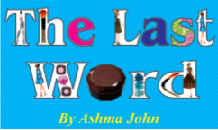
Maybe it is the raunchiness that crosses the minds of most people on a daily basis that artistes are able to belt out in a split second without shame or care. As a teenager growing up, such music wasn’t played out loud in my household, but reggae was; it was seen as wholesome. It is my opinion that dancehall is to reggae what soca is to calypso – it is the first cousin with the pulsing personality. Thus, staying away proved to be difficult and intimacy with it was just limited to my headphones and my oversized Walkman.
My interest in dancehall music heightened after seeing the movie Dancehall Queen when I was in my early teens at a local cinema in Georgetown. It revealed a different side of the industry, one which explores poverty and an escape for the poorer economic class of the African-Jamaican community. I had a particular interest in ‘Miss Gordon’ that seamstress in the movie who sewed the vibrant and sexy costumes for Marcia Green, the main character; possibly because femininity and sex appeal were being explored on bodies that had a similar resemblance to mine.
Mikhai Baktin’s text Rabelais and His World concludes that the nature of dancehall attire and language is a mode of resistance towards the highbrow culture. Baktin also claims it to be the redeployment of the “upper-class” culture. This is the very reason why flashy make-up, overdone hairstyles and eye-catching costumes are encouraged – dancehall activities are like a short role-playing fabrication of belonging to the upper class.
Genres like jazz, soca and dancehall are musical customs that came about as a result of the social legacy of racism and oppression. This is why, ever so often, we hear lyrics that representative of such.
For example:
“Diamond innah meh chain, slavery abolish” from the song “Best Place pon Earth ‘by Vybz Kartel and “Watch how mah mek my body jump an vibrate, it shake like earthquake” from the song “Indicator” by Spice.
The lyrics from both songs are reflective of racial and sexual ownership respectively, Kartel disassociates himself from slavery using a symbolic acquisition to show riches, while Spice endorses her beautiful black features (often ridiculed as beauty is measured against Eurocentric features).
While some find dancehall music to be crude and unsettling, it may be because we are taught to think exactly that because it is done by a particular set of people. In addition, while we may even find the costumes to be overdone and exaggerated, we must also question the bias of such. Europeans and colonists during the 1400s and 1500s developed a caste system based on race and heritage after they conquered nations in the Caribbean, resulting in the trends and practices of those at the top being able to foster the greatest deal of superiority. Perhaps this should be a clothing aesthetic that designers should explore as it mirrors both a niche and a way of life for many.
Dancehall music is a part of Caribbean culture and it is embraced for a reason. It is because it offers an open space where we can listen, vibe, dress, and survive the struggle of daily life and poverty. It shouldn’t be scorned but rather embraced as a way of life; all except for the promotion of violence that is.
www.online-runway.com
http://instagram.com/theonlinerunway





